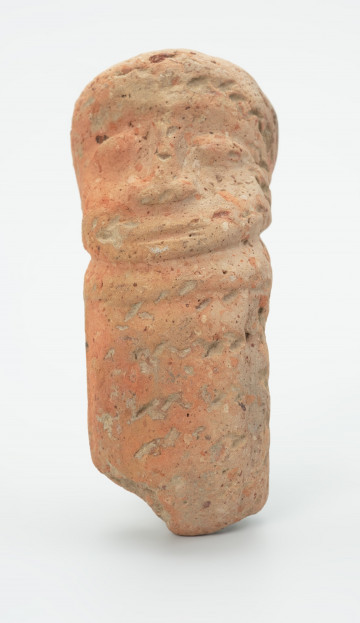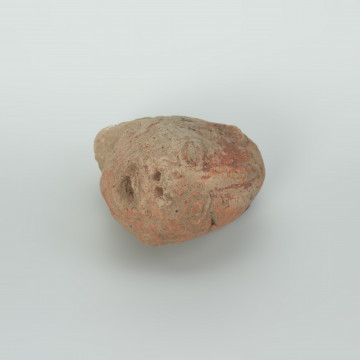
Figure
około 1480
National Museum in Szczecin
Part of the collection: Terracotta from the Niger
The discovery of terracotta sculptures from the Niger River dates to the period of French colonisation. They were found in abandoned towns and settlements scattered inside the Niger Delta. The discoveries made by archaeologists in the ancient city of Djenne-Jeno (also called old Djenne or Djenne, Djenne-Djenno, Jenne-Jeno, or old Jeno), which is located in modern Mali, precisely within the plain called Macina, 130 km south-west of the metropolis of Mopti and 3 km from the medieval founded city of Djenne, seem to be of particular interest. The settlement of Djenne-Jeno was founded in the 3rd century BC. The city flourished in the 6th-9th centuries when up to 20,000 inhabitants inhabited it. It owed its development to its convenient location on the trade route between the Sahara and the lands south of the Niger River, its fertile soil and fish-rich waters. The most interesting archaeological finds in Djenne-Jeno are terracotta sculptures, mainly representing human figures whose bodies were decorated with jewellery, ornaments and elements of the dress. The presented sculpture shows a human figure, probably a man, sitting and leaning heavily forward. The dating is problematic. The figurine was examined for age using the luminescence method in the Luminescence Dating Laboratory of the Institute of Physics at the Silesian University of Technology. Based on the results, it was determined that it is a contemporary product, made in the 20th century, precisely in 1925.
Katarzyna Findlik-Gawron
Author / creator
Dimensions
cały obiekt: height: 15,2 cm, width: 9,9 cm
Creation time / dating
Creation / finding place
Identification number
Location / status

około 1480
National Museum in Szczecin

około 1201 — 1985
National Museum in Szczecin

około 1201 — 1985
National Museum in Szczecin
DISCOVER this TOPIC
National Museum in Szczecin
DISCOVER this PATH
Educational path